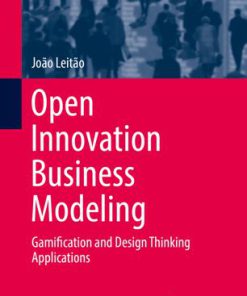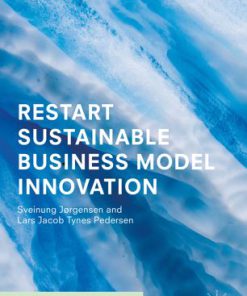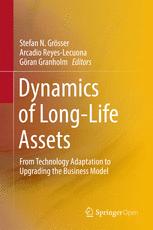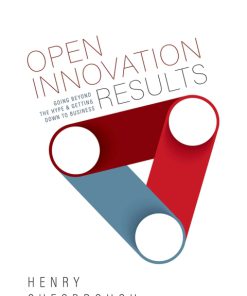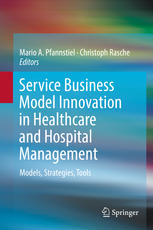Business Model Design Compass Open Innovation Funnel to Schumpeterian New Combination Business Model Developing Circle 1st edition by JinHyo Joseph Yun 9789811041280 9811041288
$50.00 Original price was: $50.00.$25.00Current price is: $25.00.
Business Model Design Compass Open Innovation Funnel to Schumpeterian New Combination Business Model Developing Circle 1st edition by JinHyo Joseph Yun – Ebook PDF Instant Download/Delivery: 9789811041280, 9811041288
Full download Business Model Design Compass Open Innovation Funnel to Schumpeterian New Combination Business Model Developing Circle 1st edition after payment
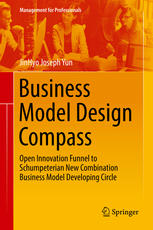
Product details:
• ISBN 10:9811041288
• ISBN 13:9789811041280
• Author:JinHyo Joseph Yun
Business Model Design Compass
Open Innovation Funnel to Schumpeterian New Combination Business Model Developing Circle
This book reveals how open innovation utilizes the developing circle of business models to establish new ones that define a unique link between technology and markets, focusing on how to develop and maintain successful business models. It draws readers into the philosophy and economic effects of open innovation from the outset.It presents four different developing circle business models for customers in the role of consumers, entrepreneurs, social entrepreneurs and engineers respectively, enabling each group to develop, utilize and enlarge creative business models, and even switch business models.In addition to these four circles, it takes a systemic approach to describe the relationship between technology and markets. From this relationship an open innovation strategy towards entrepreneurship can be adopted. From Open Innovation to a Creative Developing-Circle Business Model is an essential resource for start-up entrepreneurs, as well as for students of technology management, strategy and open innovation.
Business Model Design Compass Open Innovation Funnel to Schumpeterian New Combination Business Model Developing Circle 1st Table of contents:
Part I: Introduction
1: Introduction
1.1 The Requirements and Method to Vitalize Open Innovation
1.1.1 Why Do We Need Open Innovation?
1.1.2 How Can We Vitalize Open Innovation at the National Level or Higher?
1.2 Locus of Open Innovation
1.3 Concrete Existence of Open Innovation
1.3.1 Diverse Measures of Open Innovation
1.3.2 New Measure of Open Innovation
References
Part II: Open Innovation in an Economic System and the National Innovation System
2: Dynamics of the Open Innovation Economy System
2.1 Introduction
2.1.1 Capitalism Has Arrived at Its Growth Limits
2.1.2 How Do We Conquer the Growth Limits of Capitalism?
2.2 Reasons Behind the Growth Limits of Capitalism: Findings from the Literature
2.2.1 Discussion in the Nineteenth Century and Early Twentieth Century
2.2.2 Discussion in the Late Twentieth Century and Early Twenty-first Century
2.2.3 Discussion of the Growth Limits of Capitalism in Korea
2.3 Economy Model to Conquer the Growth Limit of Capitalism
2.3.1 Open Innovation Economic System with a Good Balance Between Three Subeconomies
2.3.2 Three Interactive Relationships in Open Innovation Economy System
2.3.3 Theoretical Validation of the Dynamics of Open Innovation Economy System
2.4 Simulation of the Dynamics of Open Innovation Economy System
2.4.1 Natural Life Cycle
2.4.2 Low-Speed and High-Speed Cases
2.5 Schumpeterian Dynamics
2.5.1 Schumpeterian Dynamics of Open Innovation Economy System
2.5.2 New Combinations as the Core in Schumpeterian Dynamics
2.5.3 Four Agencies in Schumpeterian Dynamics
References
3: Economic Effects of Open Innovation
3.1 Introduction
3.2 Phenomena of Open Innovation
3.2.1 Long-Tailed Phenomena
3.2.2 App Store Phenomena
3.3 Economic Effects of Open Innovation
3.3.1 Marginal Product Increasing
3.3.2 Economy of Diversity
3.3.3 X-Efficiency Enhancement
References
4: Open Innovation Policy in National Innovation System
4.1 Introduction
4.2 Open Innovation Policy
4.3 National Innovation System Dynamic Model of Open Innovation Policy
4.3.1 Model Building
4.3.2 Different Levels of Open Innovation Policy
4.4 Scope of Open Innovation Policy
4.5 Issues of Open Innovation Policies
4.5.1 Open Innovation as a Democratizing Innovation
4.5.2 Open Innovation Is “Very Unique”
4.5.3 Open Innovation Needs Enough R&D Investment
4.6 Conclusion
References
Part III: Open Innovation Strategy of Firm
5: Concept, Structures, and Decision Factors of Open Innovation
5.1 Emergence of Open Innovation
5.2 The Structure of Open Innovation
5.3 Factors of Open Innovation of SMEs
5.4 The Difference of Open Innovation According to Product Life Cycle
5.4.1 Product Life Cycle
5.4.2 Level of Open Innovation According to the Product Life Cycle at Sectorial Innovation Syst
5.4.3 Difference of Open Innovation Effect According to the Product Life Cycle at the Firm Lev
5.4.4 Rethinking the Relationship Between Open Innovation and Product Life Cycle
5.5 The Role of Internal Open Innovation Attitude
5.5.1 Internal Open Innovation Attitude
5.5.2 Deep Relation Between Internal Open Innovation Attitude and External Open Innovation
5.5.3 The Function of Internal Open Innovation Attitude to External Open Innovation
5.6 The Difference in Open Innovation Depending on Whether a Firm Is Modular or Not
5.6.1 The Relation Between Module and Open Innovation
5.6.2 The Difference in Open Innovation in Interdependent or Modular Architecture
5.7 The Difference in Open Innovation According to Regional Innovation Systems or Clusters
References
6: Real Contents and Channels of Open Innovation
6.1 Introduction
6.2 Open Innovations of Fuel Cell SMEs
6.2.1 Contents and Channels of Open Innovation by YLJO
6.2.2 Contents and Channels of Open Innovation by DSN
6.2.3 Contents and Channels of Open Innovation by OT
6.3 Open Innovation of SMEs in Medical Instruments and Intelligent Robot Industries
6.3.1 Contents and Channels of Open Innovation by OGV
6.3.2 Contents and Channels of Open Innovation by DTS
6.3.3 Contents and Channels of Open Innovation by YJM
6.4 Closed Innovation of SMEs
6.4.1 Cases of Closed Open Innovation of Large-Scale Process Industries
6.4.2 Risks of Self R&D Under Closed Innovation System
6.4.3 Closed Innovation of Local Subsidiary Company of Original Technology-Based Industry
References
7: Dynamics of Open Innovation
7.1 Introduction
7.2 Model Building
7.3 Construction of OCE Model
7.3.1 Open Innovation in the OCE Model
7.3.2 Complex Adaptive Systems in the OCE Model
7.3.3 Evolutionary Change in the OCE Model
7.4 Applying OCE Model
7.4.1 Who Can Use OCE Model?
7.4.2 How Can We Use the OCE Model?
References
Part IV: Relation Between Open Innovation and Business Model
8: The Relationship Between Open Innovation, Entrepreneurship, and Business Model
8.1 Introduction
8.2 The Relation Among Three Factors
8.2.1 The Relationship Between Open Innovation and Introduction of a New Business Model
8.2.2 The Relationship Between Entrepreneurship and Open Innovation
8.2.3 The Relation Between Open Innovation and RIS or National Innovation System
8.2.4 The Relation Among Three Factors
8.3 Difference of Three Factors According to RISs and National Innovation Systems
8.3.1 The Difference Between Seoul RIS and Daegu RIS in Korea
8.3.2 The Difference Between Korean National Innovation System and Indonesia National Innovation
References
9: Business Model and Open Innovation Conditions for the Sustainable Growth of SMEs
9.1 Introduction
9.1.1 Why Do Some Firms Grow Sustainably and Others Disappear in the Short Term?
9.2 The Relationship Between Business Model and Open Innovation
9.2.1 In Advance Discussions, Knowledge Strategies, and Business Models
9.2.2 Relationship Framework Between Business Model and Open Innovation
9.3 Changing of Open of SMEs
9.4 Conclusion
References
Part V: Developing a Business Model
10: The Way from Open Innovation to Business Model
10.1 The Relationship Between Open Innovation and Business Models
10.2 Business Models as New Combinations Between Technology and the Market
10.2.1 Technology Aspects of Business Models
10.2.2 Market Types of Business Models
10.2.3 Quadrants of the Combination of Technology and the Market
10.3 Four Perspectives of Business Models from the Open Innovation Knowledge Funnel
10.4 Five Key Factors of Business Models
10.5 Good Habits for Developing Capabilities of Creative Business Models
10.5.1 Walking and Meditation
10.5.2 Taking a Trip
10.5.3 Enjoying Movies and Reading Books
References
11: Customer Open Innovation-Based Business Model Developing Circle
11.1 Cases
11.1.1 Dyson Vacuum Cleaners
11.1.2 Han Kyung Hee Steam Cleaner
11.2 Customer Open Innovation-Based Business Model Developing Circle
11.2.1 Who Is in Addition?
11.2.1.1 Key Points
Creative Performance of Interested Consumers
The Philosophy of Customer Segmentation
11.2.1.2 Customer Segmentation for the Customer Open Innovation Business Model Circle
11.2.2 What Should Be Solved?
11.2.2.1 Key Factors
MVPs with Feedback Loop
11.2.2.2 Value Proposition for the Customer Open Innovation Business Model Circle
11.2.3 How Should the Technological System Be Constructed?
11.2.3.1 Key Factors
Key Resources, Key Activities, and Key Partnerships Are Included in a Technological System
Make Your Business Model Difficult to Copy
Technological System for Connecting, Inspiring, and Transforming
11.2.3.2 Technological System for the Customer Open Innovation Business Model Circle
11.2.4 Why Should You Establish a Start-Up?
11.2.4.1 Key Factors
Cash Flow of Start-ups
Short-term Revenue and Long-term Distribution Cost
11.2.4.2 Cost and Revenue for the Customer Open Innovation Business Model Circle
11.2.5 When and Where Does One Meet Customers?
11.2.5.1 Key Factors
The Get, Keep, Grow Funnel for Customer Business Models
Sophisticated Customer Channels and Relationships Are the Highlights of Customer Business Models
11.2.5.2 Channels and Customer Relations for the Customer Open Innovation Business Model Circle
References
12: User Open Innovation-Based Business Model Developing Circle
12.1 Cases
12.1.1 Nike+ (Nike Plus)
12.1.2 Starbucks
12.2 User Open Innovation-Based Business Model Developing Circle
12.2.1 Who Demands Our Firms for Additional or Different Substance?
12.2.1.1 Key Points
Customer-driven Supply Chain Open Innovation
The Innovation Community
12.2.1.2 Customer Segmentation for the User Open Innovation Business Model Circle
12.2.2 What Should Be the Countermeasures Against Demands or Expectations?
12.2.2.1 Key Factors
Identify Other Customers by Identifying Nonconsumers and Overshot Customers
Gain Customer Insights
12.2.2.2 Value Proposition for the User Open Innovation Business Model Circle
12.2.3 How Should Firms Recombine Between Technologies and the Market?
12.2.3.1 Key Factors
Co-creation Platforms
Co-creation Sectors and Firms
12.2.3.2 Technological System for the User Open Innovation Business Model Circle
12.2.4 Why Should Firms Observe the Reconfiguring Process?
12.2.4.1 Key Factors
From a Product-driven Business Model to a Service-driven One
Open Services Innovation Concept Map
12.2.4.2 Cost and Revenue for the User Open Innovation Business Model Circle
12.2.5 When and Where Does One Meet New or Additional Customers?
12.2.5.1 Key Factors
Open Source as a Revitalizer of Open Innovation and Creative Business Models
12.2.5.2 Channels and Customer Relations for User Open Innovation Business Model Circle
References
13: Engineer Open Innovation-Based Business Model Developing Circle
13.1 Cases
13.1.1 Elon Musk with Tesla Motors and SpaceX
13.1.2 Larry Page and Sergey Brin with Google
13.2 Engineer Open Innovation-Based Business Model Developing Circle
13.2.1 Who Are the Relevant Persons When Chasing the Market Problem?
13.2.1.1 Key Points
The Relationship Between an Invention or Technology and Business Models
13.2.1.2 Customer Segmentation for the Engineer Open Innovation Business Model Circle
13.2.2 What Will Take Place If New Technology Is Applied to the Modern Market?
13.2.2.1 Key Factors
Open Innovation-friendly Industries and Technologies
Keep the Business Model Innovation Principles in Mind
Build Adjacent Innovation Platforms
13.2.2.2 Value Proposition for the Engineer Open Innovation Business Model Circle
13.2.3 How Should Firms Combine New Technology and a New Market?
13.2.3.1 Key Factors
Enablers and Blockers of Radical Innovation
Similarities Between Technology Levers and Business Model Levers
Balance Between Creativity and Value Capturing
13.2.3.2 Technological System for the Engineer Open Innovation Business Model Circle
13.2.4 Why Should Firms Observe This Combination?
13.2.4.1 Key Factors
Dynamics Among Opportunities, Resources, and Teams
Capturing the Window of Opportunity
13.2.4.2 Costs and Revenues for the Engineer Open Innovation Business Model Circle
13.2.5 When and Where Does One Meet New or Additional Customers?
13.2.5.1 Key Factors
Quadrants Between a Channel and a Product
The Changes of Channels in Health Care
Changes in the Channels of Education
13.2.5.2 Channels and Customer Relations for the Engineer Open Innovation Business Model Circle
References
14: Social Entrepreneur Open Innovation-Based Business Model Developing Circle
14.1 Cases
14.1.1 Burro Battery
14.1.2 Microfinance in Bangladesh
14.2 Social Entrepreneur Open Innovation-Based Business Model Developing Circle
14.2.1 Who Is in Need of Social Value?
14.2.1.1 Key Points
Nonprofit Enterprises Have Business Models as Well
Technology Follows Ideas or Social Business Models
14.2.1.2 Customer Segmentation for the Social Entrepreneur Open Innovation Business Model Circle
14.2.2 What Should Be Provided to Solve a Social Problem?
14.2.2.1 Key Factors
Social Entrepreneurship That Can Capture Social Value
The Entitlement Approach to Social Problems
14.2.2.2 Value Propositions for the Social Entrepreneur Open Innovation Business Model Circle
14.2.3 How Should the System for Producing and Consuming Social Value Be Constructed?
14.2.3.1 Key Factors
The World Is Remarkably Unequal
The Process of Social Business Model Development
14.2.3.2 Technological System for the Social Entrepreneur Open Innovation Business Model Circle
14.2.4 Why Choose a Social Enterprise?
14.2.4.1 Key Factors
Social Return on Investment Beyond the Social Value Proposition
The Zero-marginal-cost Society
Finding Capitalism’s Generative Ideas
14.2.4.2 Cost and Revenue for the Social Entrepreneur Open Innovation Business Model Circle
14.2.5 When and Where Does One Meet Social Value Customers or Social Capital Providers?
14.2.5.1 Key Factors
Let Us Become the Adaptable Giver with a Generous Tit-for-tat Strategy
Socioeconomic Development Sharing and Collaboration
14.2.5.2 Channels and Customer Relationship for the Social Entrepreneur Open Innovation Business
References
Index
People also search for Business Model Design Compass Open Innovation Funnel to Schumpeterian New Combination Business Model Developing Circle 1st:
business model design compass open innovation
business compass model
business model design
open business model
business model compass
You may also like…
Business & Economics - Management & Leadership
Business Model Management : Design – Process – Instruments Bernd W. Wirtz
Business & Economics
Business & Economics
Computers - Applications & Software
Business & Economics
Open Innovation Results: Going Beyond the Hype and Getting Down to Business 1st Edition Chesbrough
Business & Economics - Personal Finance
End-to-End M&A Process Design: Resilient Business Model Innovation Thorsten Feix
Business & Economics
Business & Economics
Business & Economics - Management & Leadership





